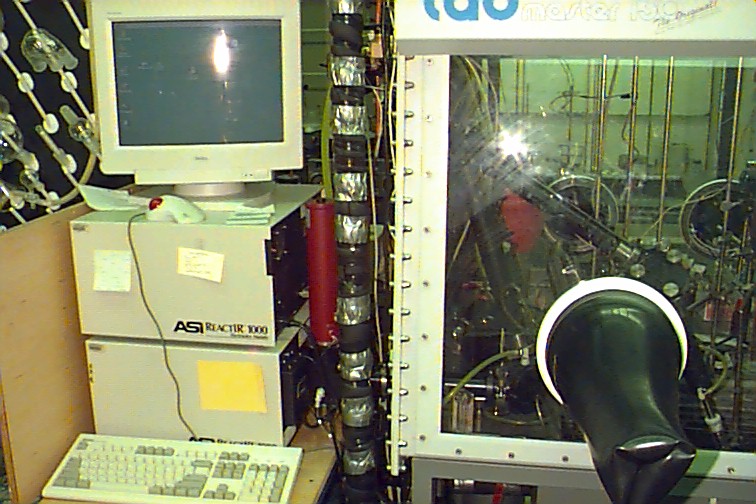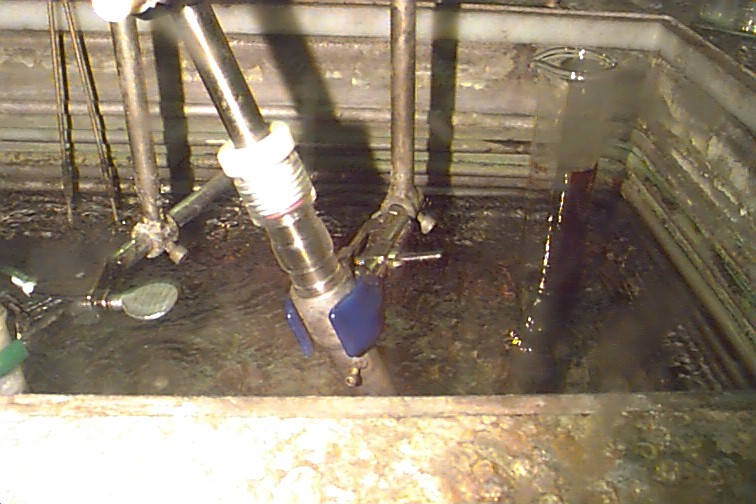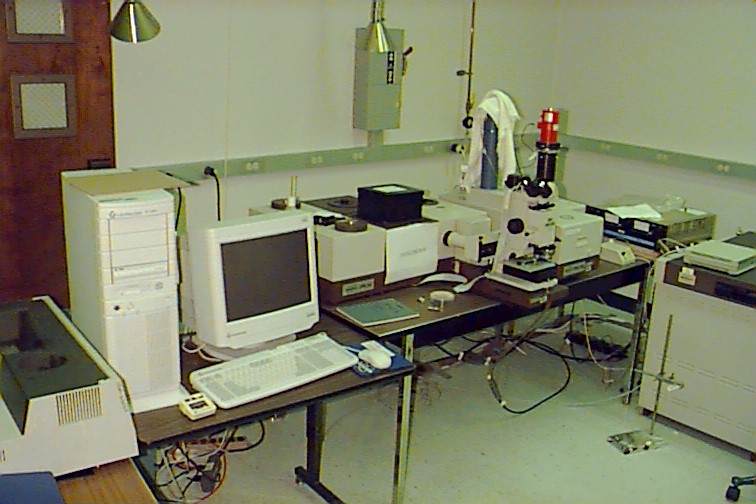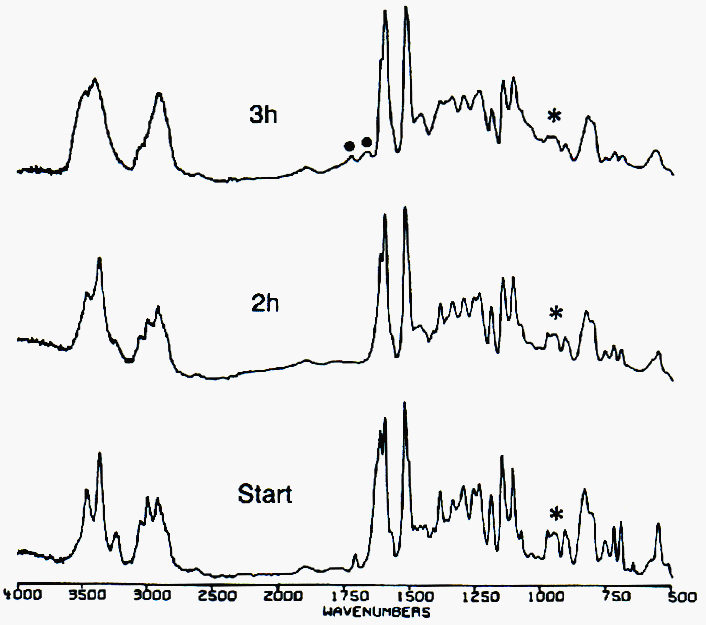 |
 |
 |
Fourier transform infrared analysis can be used to determine the chemical
modification of fiber surfaces caused by surface treatment. A common
process in commercial synthesis of fiber reinforced composites is chemical
treatment of the fiber for compatablization of the matrix with the fiber
material. This enhances the composite by forming a chemically bonded
interphase between the fiber and the matrix which greatly increases the
performance of the material under stress and helps prohibit catastrophic
failure. Attenuated total reflectance and diffuse reflectance attachments
can be used in conjunction with the spectrometer for improved sampling
depth and resolution.
 |
 |
 |

The above images are actual infrared spectrometers. The top three images are representations of an FTIR-ATR spectrometer adapted to an inert glove box. The black conduit carries a double infrared beam, to and from the sample, from the instrument (left) to the diamond ATR probe (right). This particular system is set up to monitor polymerizations in situ, however the instrument (left) can be removed from the dry box and transferred to use on the bench top for composite analysis. The bottom picture is a FTIR which involves the infrared beam being shot through a sample dispersed between to transparent salt plates.
FTIR can be used to analyze the presence of different layers on the fiber surface at small depths. It is an excellent compliment to the ESCA analysis with respect to amorphous or crystalline regions in the material. The spectra below represents the curing of a carbon-epoxy prepreg. The disappearance of the epoxide ring peaks at 1000-900 cm-1 (indicated by a "*" in the figure). The appearance of degradation also occurs as shown by the peaks forming and increasing with time at 1724 and 1668 cm-1. These are due to the carbonyl groups formed by atmospheric oxidation.

Below is a table of technique properties
for each of the methods mentioned in this area of surface analysis techniques.
|
|
analysis |
|
levels |
|
|
resolution |
energy |
fingerprint |
|
|
|
|
|
|||||
|
|
|
|||||||
|
Desorption |
|
|
||||||
|
|
|
|
|